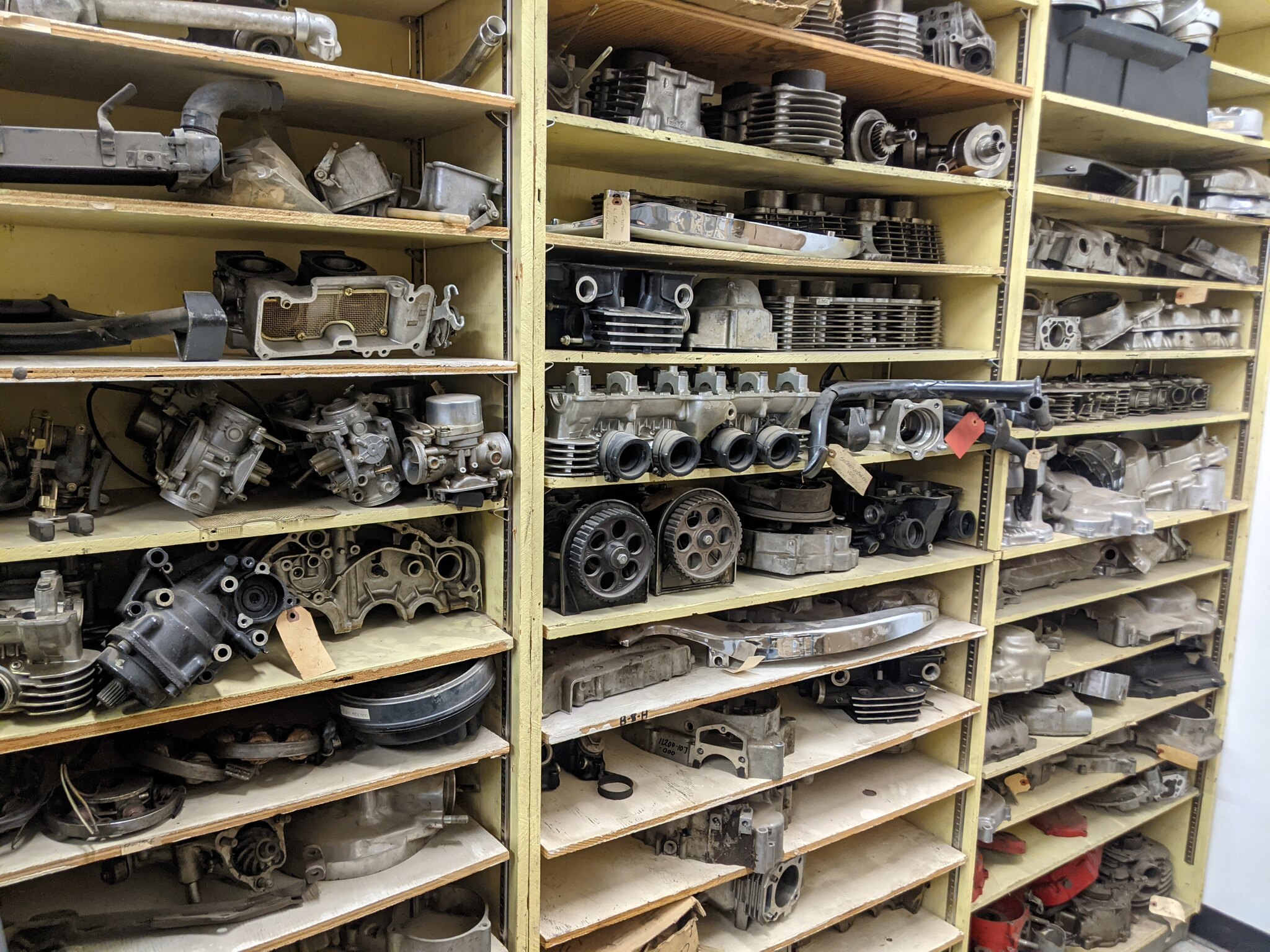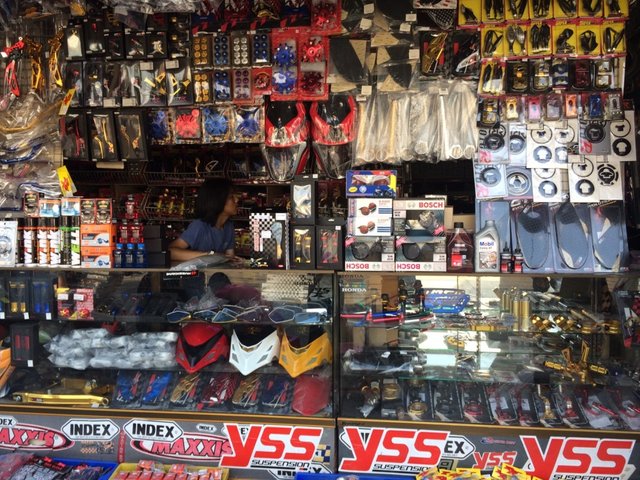Shop the very best MX Parts NZ for Your High-Performance Bike
Shop the very best MX Parts NZ for Your High-Performance Bike
Blog Article
Recognizing the Crucial Parts of a Bike: A Comprehensive Guide for Lovers
For motorcycle enthusiasts looking to raise their riding experience and ensure their bikes run smoothly, comprehending the important elements of a motorbike is critical. Each aspect, from the engine's complex functions to the crucial function of the braking mechanisms, not only affects efficiency yet additionally safety and security and convenience.
Engine Parts

The camshaft plays a crucial duty in regulating the timing of the engine's valves, making certain the accurate opening and closing essential for reliable gas and air consumption, in addition to exhaust expulsion. This timing is essential to keeping ideal engine efficiency and efficiency. Furthermore, the carburetor or gas shot system, depending on the motorcycle version, is accountable for blending air with fuel in the right proportion for combustion.
The cooling system, either air or liquid-based, functions to keep the engine's temperature within functional restrictions, avoiding getting too hot and ensuring durability - motorcycle shop. Each component, diligently developed and integrated, adds to the smooth procedure of the engine, defining the motorcycle's power output and overall performance
Transmission System
Important to the bike's capability, the transmission system makes sure efficient power transfer from the engine to the wheels. This system comprises several vital elements, consisting of the clutch, transmission, and last drive, each playing a vital role in translating the engine's power right into motion. The clutch, commonly run by a hand lever, offers to disengage the engine and involve from the transmission, permitting for smooth gear modifications and controlled acceleration.
The gearbox, usually referred to as the transmission proper, contains a collection of equipments that motorcyclists can by hand shift via to change the bike's speed and torque outcome. These gears are set up in a series that makes it possible for the bike to speed up efficiently and maintain optimum engine efficiency across numerous rates. A lot of motorbikes utilize a consecutive transmission, needing the biker to shift equipments in an established order.
Braking Devices
While recognizing the transmission system is essential to taking advantage of a motorcycle's power, equally important is the capacity to manage and stop that power efficiently, which is where braking devices enter play. Brakes are critical for safety and security and performance, providing the cyclist with the needed control to navigate numerous terrains and problems. Usually, motorbikes feature two kinds of braking systems: disc brakes and drum brakes.
Disc brakes are a lot more common Visit Your URL in modern-day motorbikes as a result of their exceptional performance. They are composed of a brake disc, caliper, and pads. When activated, the caliper presses the brake learn this here now pads against the rotating disc, converting kinetic power right into warm, thus reducing the wheel. This system offers much better heat dissipation, regular performance, and improved quiting power, especially in damp conditions.
On the other hand, drum brakes, though much less common, are still discovered in some motorbikes. They function by pressing brake shoes against the inner surface area of a drum connected to the wheel. While usually less effective in warm dissipation and stopping power, drum brakes are simpler and a lot more cost-effective.
Understanding these stopping systems' subtleties permits cyclists to preserve their motorcycles appropriately and value the design that makes certain reliable and secure quiting.
Suspension and Steering
Suspension and guiding systems are essential parts that significantly affect a bike's handling and adventure convenience. The shock absorber, including forks at the front and shock absorbers at the back, soaks up roadway abnormalities, improving security and control. Front forks, upside down or usually telescopic, compress and rebound to alleviate effects, while back shock absorbers maintain tire contact with the roadway, crucial for grip and security.
Guiding, centered around the handlebars, connects the rider to the motorcycle's directional control. The steering head bearings make sure smooth procedure, allowing accurate ability to move. Correct placement and upkeep of these bearings are critical for predictable guiding action and decreasing biker fatigue.
The suspension's adjustability is an additional important element; preload, damping, and rebound settings permit personalization to suit numerous riding problems and styles. This adaptability is crucial for enhancing performance, whether browsing metropolitan roads or dealing with rugged routes. Technologies like digital shock absorber offer real-time modifications, boosting adventure top quality throughout varied terrains.

Electric Solutions
After ensuring a regulated and smooth experience with efficient suspension and guiding systems, interest transforms to the electrical systems, a crucial aspect of modern-day motorbikes. These systems play a crucial function right here not just in starting the engine yet likewise in powering numerous components that improve the capability and security of the bike.
At the heart of a motorbike's electric system is the battery, which shops electrical energy essential for beginning the engine and powering complementary systems - mx gear nz. The generator or generator, paired with the rectifier-regulator, guarantees the battery continues to be billed while the motorcycle functions, converting mechanical power right into electric power and keeping voltage degrees
The ignition system, another crucial element, is accountable for firing up the air-fuel mix in the engine's cyndrical tubes. Modern bikes usually utilize an electronic ignition system, offering greater efficiency and dependability compared to conventional systems.
Illumination systems, including headlights, tail lights, and indicators, are likewise important, guaranteeing exposure and security for the biker. Extra electronic components such as sensing units, control devices, and presents add to sophisticated functions like fuel injection monitoring, anti-lock stopping systems (ABDOMINAL), and digital dashboards, further enhancing the riding experience.
Final Thought
A complete comprehension of a motorcycle's crucial parts, consisting of the engine, transmission system, braking devices, suspension, guiding, and electric systems, is vital for lovers intending to maximize safety, comfort, and efficiency. Proficiency of these elements permits for informed choices regarding maintenance and upgrades, ultimately improving the riding experience. By incorporating this knowledge, motorcyclists can ensure their motorbikes run at peak efficiency and dependability, thereby making the most of both satisfaction and longevity of their automobiles.
For motorcycle lovers looking to boost their riding experience and ensure their bikes run efficiently, comprehending the important parts of a motorcycle is vital.Integral to the bike's performance, the transmission system ensures reliable power transfer from the engine to the wheels.While understanding the transmission system is crucial to using a bike's power, equally essential is the capability to manage and quit that power effectively, which is where braking mechanisms come into play. Normally, motorcycles feature two types of stopping systems: disc brakes and drum brakes.
A thorough comprehension of a motorbike's necessary parts, including the engine, transmission system, braking mechanisms, suspension, steering, and electrical systems, is important for lovers aiming to optimize comfort, efficiency, and safety and security.
Report this page